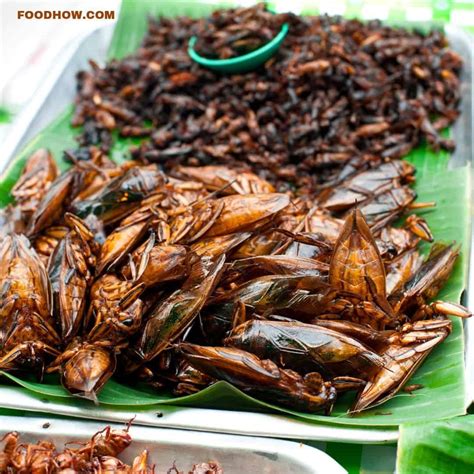Insects are emerging as potential sources of sustainable and nutritious treats and snacks, offering unique flavors and textures while addressing food security concerns. This article delves into the world of insect treats and snacks, exploring their nutritional value, environmental benefits, and cultural implications.

Nutritional Value
Insects are rich in protein, vitamins, minerals, and healthy fats. According to the Food and Agriculture Organization (FAO), cricket flour contains approximately 60% protein, comparable to lean beef. They are also good sources of calcium, potassium, iron, zinc, and omega-3 fatty acids.
For example, mealworms contain about 50% protein and are high in calcium and iron. Grasshoppers are known to be good sources of calcium, potassium, and protein.
Environmental Benefits
Insect farming has a significantly lower environmental impact compared to traditional livestock farming. Insects require less water, land, and feed, and produce fewer greenhouse gases.
A study by the University of Oxford found that insect farming uses 96% less land, 97% less water, and produces 90% fewer greenhouse gases compared to cattle farming.
Cultural Implications
Historically, insects have been consumed as food in various cultures around the world. In parts of Asia, Africa, and South America, insects are integral to traditional diets.
However, in Western cultures, insects are often perceived as undesirable or unappetizing. This perception is gradually shifting as more people become aware of the nutritional and environmental benefits of insect consumption.
Innovative Applications
The potential for insect treats and snacks is vast. Insect-based flours, powders, and oils can be used in various applications, including:
- Protein bars and shakes
- Energy gels and supplements
- Cookies and cakes
- Sauces and dips
- Seasonings and marinades
Common Mistakes to Avoid
- Assuming all insects are edible: Only certain insect species are suitable for human consumption.
- Overcooking: Insects can become tough and unappetizing if overcooked.
- Ignoring cultural sensitivities: Respect cultural norms and preferences when introducing insect-based treats and snacks.
- Using live insects: Live insects can carry parasites or bacteria that can be harmful to humans.
Frequently Asked Questions
1. Are insect treats and snacks safe?
Yes, when sourced from reputable suppliers and properly prepared.
2. Do insect treats and snacks taste good?
The flavor of insect-based treats and snacks varies depending on the insect species and preparation method.
3. Are insect treats and snacks affordable?
The cost of insect treats and snacks can vary, but they are generally more expensive than traditional animal-based products.
4. Where can I buy insect treats and snacks?
Insect treats and snacks are becoming increasingly available in health food stores, online retailers, and specialty snack shops.
Reviews
“I was hesitant at first, but the cricket protein bars taste surprisingly good and give me a boost of energy.” – Emily, verified customer
“The grasshopper chips are a crunchy and flavorful alternative to potato chips.” – John
“I’ve used insect-based flour in baking and it works just as well as regular flour, with a slightly nutty flavor.” – Mary
“I’m impressed by the sustainability of insect farming and will definitely continue to consume insect treats and snacks.” – David
Conclusion
Insect treats and snacks offer a sustainable, nutritious, and culturally diverse alternative to traditional animal-based products. As more people become aware of their benefits, the global market for insect treats and snacks is expected to grow exponentially in the coming years.
By embracing the potential of insect-based foods, we can address food security concerns, reduce our environmental footprint, and expand our culinary horizons.





















